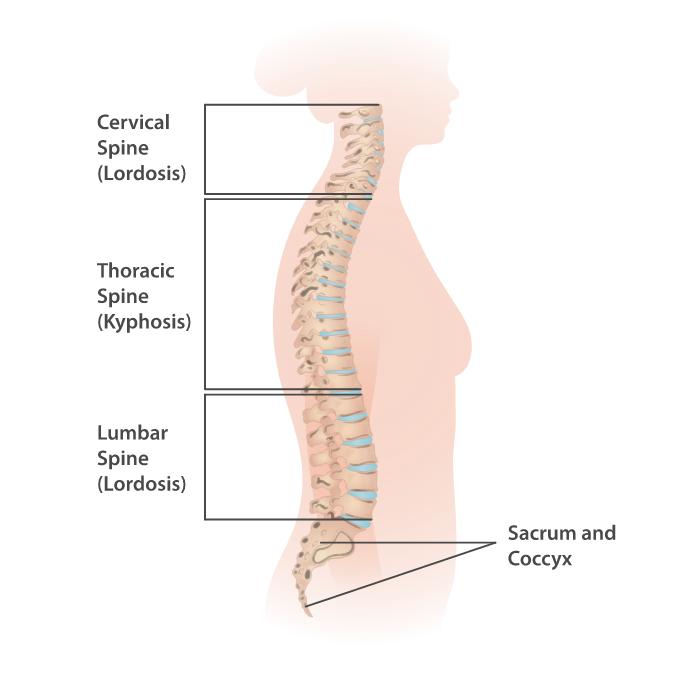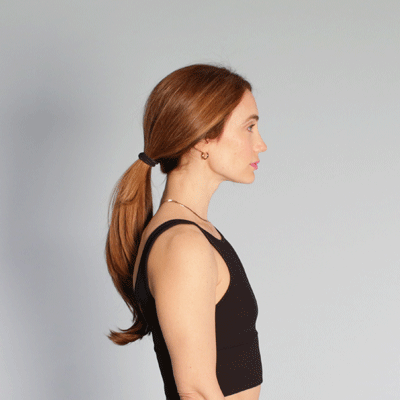The 6 Best Stretches & Exercises to Correct Dowager’s Hump
Many people find themselves suffering from symptoms of shoulder and neck pain and stiffness commonly caused by a form of thoracic hyperkyphosis, more commonly known as “dowager’s hump”. This abnormal curvature of the upper back affects a significant percentage of older adults, and can be caused by muscle weakness, sensory changes, and other factors.
The good news is that patients don't have to live with the ongoing discomfort and aesthetic concerns associated with this condition. Keep reading to learn more about what Dowager's Hump is, its potential causes, and some simple and effective stretches that can help improve and alleviate associated symptoms.
Understanding Dowager's Hump
So what is Dowager’s Hump? Dowager's Hump is characterized by an overt hump or curvature in the thoracic spine (the upper back), resulting in a rounded hunchback appearance. This differs from Buffalo Hump which is typically caused by the accumulation of excess fat at the base of the neck and upper back. Buffalo hump and Dowager's hump are two distinct conditions, although they both affect the curvature of the upper back and neck.
As well as this visible bump in the upper back, patients with Dowager's Hump also tend to exhibit a forward head posture. This forward head posture can be a major contributor to the problem, as it places significant load on the neck muscles and joints. Over time, this additional strain can lead to changes in spinal curvature and a range of different symptoms.
Symptoms Of Dowager’s Hump
Some of the Dowager's Hump symptoms may include:
Visible Hump: The most noticeable symptom is the rounded hump on the upper back, typically at the base of the neck or the upper thoracic spine.
Neck and Shoulder Pain: Many individuals with Dowager's Hump experience discomfort, stiffness, or pain in the neck and shoulder areas due to the increased strain on these muscles.
Back Pain: Kyphosis can also cause back pain, particularly in the upper back region.
Limited Mobility: Reduced flexibility and range of motion in the upper back can be a common symptom, making it difficult to perform certain movements.
Muscle Weakness: The weakening of the muscles supporting the thoracic spine may lead to muscle imbalances and weakness.
Headaches: Some individuals with Dowager's Hump may experience chronic headaches, which can be attributed to the altered posture and increased stress on the neck and upper back.
Causes Of Dowager’s Hump
What causes Dowager’s Hump? Well, Dowager's Hump causes include poor posture, osteoporosis, congenital factors, sensory changes, and other medical conditions. Regardless of the specific cause, Dowager's Hump develops due to changes in the strength of the muscles surrounding the thoracic vertebrae. When these muscles become weaker, other muscle groups have to compensate, leading to overuse, strain, and a change in posture.
If it’s not treated, patients with Dowager's Hump may experience pain through the neck and shoulders, possibly into the arms. Besides the physical aesthetic concerns, many people with Dowager's Hump also suffer from chronic headaches and discomfort, making it essential to address this issue promptly.
Treating Dowager’s Hump
The positive news is that Dowager's Hump treatment can be effective. Combined with other treatments like medication, massage, posture correction, and education, there are key stretches and exercises that can relieve the pressure on the neck and upper back, reduce headaches, and help correct the curvature associated with Dowager's Hump. Physical therapy is a key part of the treatment, and physical therapists will liaise with medical professionals to ensure the best treatment and outcomes.
6 Stretches to Alleviate Dowager's Hump
Before starting any treatment, it's essential to consult with a healthcare professional such as a physical therapist for a comprehensive assessment and tailored guidance. In this way, the physical therapist can assess and diagnose any issues, and apply the right treatments to minimise the risk of any negative side effects and maximise the positive outcomes.
The following are some of the exercises a physical therapist may prescribe for patients with Dowager’s Hump:
1. Pectoral Stretch
A physical therapist may recommend this to relieve tension and improve flexibility in the front shoulder muscles. For this exercise, place your arms on a door frame, forming a 90-degree angle with each arm, and lean forward to stretch the chest muscles. In the later stages of rehabilitation, to increase intensity, you can raise your arms slightly higher above for a stronger stretch.
2. Upper Back Stretch
A physical therapist may prescribe this exercise to restore the range of motion in the back muscles. For this exercise, stand facing a wall, with hands flat against it above your head. Maintain a neutral neck position and slowly sink into the stretch. Keep your ears in line with your shoulders. This exercise may feel stiff initially, so it’s important to move slowly and start with small movements only.
3. Chin Tilts
A physical therapist may suggest this exercise to correct head posture. For this exercise, start by tilting your head up gently to look up towards the ceiling. Then tilt your head down to look towards the floor. Return by moving the head back to the starting position. The physical therapist may progress the exercise with adding resistance from the hands.
4. Scapular Squeezes
A physical therapist may use this exercise to retrain the smaller muscles in the back that have been overloaded from the changes in the thoracic spine. For this exercise, sit or stand with your arms by your sides. Squeeze your shoulder blades together, hold for a few seconds, and release. This exercise helps re-strengthens upper back muscles by using small movements to activate the muscles in a more functional way.
5. Cervical Retractions
A physical therapist may use this exercise to increase range of motion in the cervical and thoracic spine. For this exercise, sit or stand in a chair with good posture. Gently retract your chin backward, creating a double chin. Hold briefly and release back to the starting position. This helps improve head and neck alignment which can help make a significant improvement in dowager's hump before and after.
6. Wall Angels
A physical therapist may facilitate this movement to re-lengthen the muscles that are affected by Dowager’s Hump. For this exercise, stand with your back against a wall and arms at your sides. Slowly raise your arms to form a "Y" shape, then bend your elbows to create a "W" shape. In this way, this exercise enhances shoulder and upper back mobility which is commonly reduced from Dowager’s Hump.
It’s important to note that the severity of the Dowager’s Hump condition can vary among individuals. Not all treatments will be the right treatment, so it’s important to consult a trained physical therapist who can monitor the progress and make changes or refer to specialists as needed.
Book Now
Addressing Dowager’s Hump
Dowager's Hump is a common issue that affects a significant portion of older adults. While it can lead to aesthetic concerns and discomfort, the good news is that it can be treated. By focusing on improving posture and implementing specific stretches like the pectoral stretch and wall angels, physical therapists can help patients with Dowager’s Hump make significant progress in daily life.
However, it's crucial to approach the treatment of Dowager's Hump with the guidance of healthcare professionals who can provide personalized advice and ensure that you're on the right path to a pain-free back and improved posture. Don't let Dowager's Hump hold you back – take proactive steps towards a healthier, more comfortable life with physical therapy.












